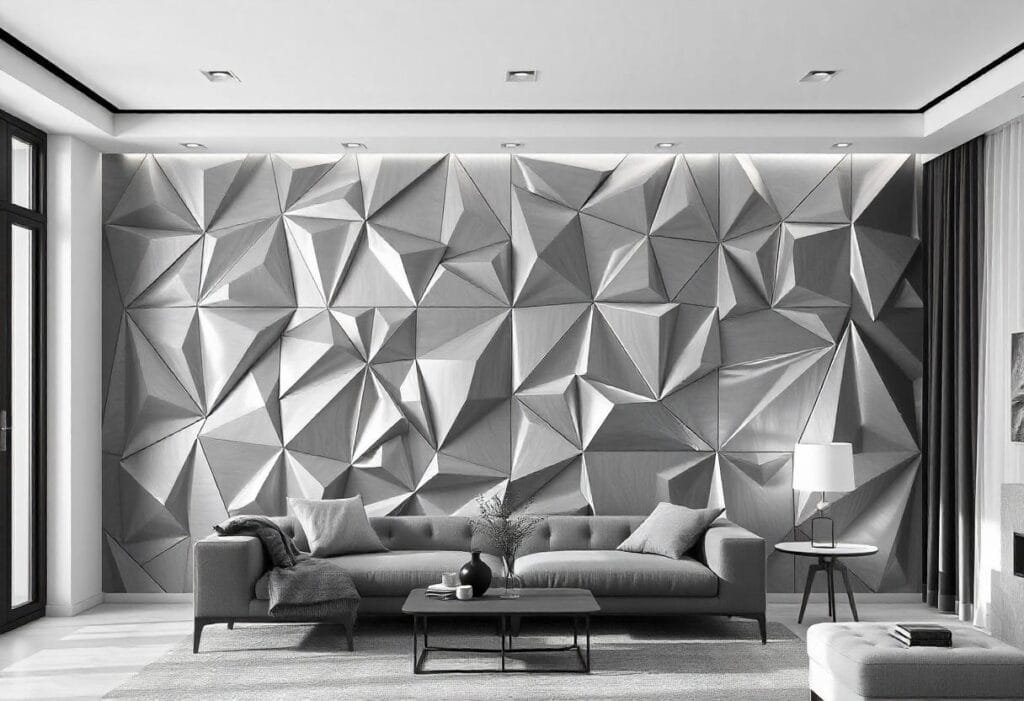CGWall has emerged as a groundbreaking concept in the realm of creative design and technology. From architectural structures to virtual worlds, cgwall is transforming how we view, interact with, and integrate wall solutions into diverse environments. Whether you are new to the concept or exploring ways to incorporate cgwall into your projects, this comprehensive guide offers everything you need to know about its functionalities, advantages, and applications.
What is Cgwall?
Cgwall refers to a technological and creative approach used to design, create, and optimize walls using advanced computer-generated tools. It combines aesthetics and functionality, providing limitless opportunities in both physical and digital spaces. The technology behind cgwall incorporates state-of-the-art 3D rendering, augmented reality (AR), and virtual reality (VR) innovations to produce versatile solutions.
This fusion of artistic creativity and modern tech empowers architects, designers, and creators to turn walls into visually appealing yet practical elements for any space.
The Evolution of Cgwall Technology
From Physical to Digital Design
The cgwall concept traces its roots to early architectural wall renderings. As 3D modeling software advanced, designers began creating walls that transcended traditional limitations. Gradually, the process evolved to include photorealistic visualizations, enabling precise planning of physical structures.
Today, cgwall encompasses digital tools, making it easier than ever to visualize and implement breathtaking designs that previously seemed impossible.
Why is Cgwall So Popular?
- Enhanced Versatility: Cgwall is applicable across multiple industries, including gaming, real estate, marketing, and construction.
- Cost Efficiency: Realistic digital models save on material costs by refining designs before execution.
- Sustainability: Using cgwall technology reduces waste in construction and promotes eco-friendly practices.
- Real-Time Customization: Clients can experiment with textures, dimensions, and finishes on the go, empowering faster decision-making.
The Core Features of Cgwall
When using cgwall, there are distinct features that set this approach apart from traditional wall designs:
- 3D Renderings: Accurate simulations of physical or virtual environments.
- Customizable Options: An endless array of textures, colors, materials, and finishes.
- Precision Engineering: Measurements and simulations powered by algorithms to ensure flawless execution.
- Seamless Integration: Works seamlessly with other advanced technologies like VR, AR, and BIM (Building Information Modeling).
Benefits of Using Cgwall in Projects
The application of cgwall technology introduces unparalleled benefits, ensuring that designers, architects, and end-users achieve their desired results with ease:
- Flexibility: Adapt cgwall designs to suit indoor and outdoor environments effortlessly.
- Creative Freedom: Push the limits of imagination with innovative designs and patterns.
- Durability: By testing materials in virtual environments, you can predict long-term performance.
- Cost Predictability: Project budgets are easier to manage with precise estimates.
- Engaging Visuals: End products deliver not just functionality but immersive beauty.
Applications of Cgwall Across Industries
Architectural Design
Architects frequently use cgwall technology to simulate walls with various patterns, textures, and lighting. This technology also plays a vital role in energy-efficient building designs.
Gaming and Film
The use of cgwall in the entertainment industry cannot be overstated. Intricate game levels and hyper-realistic backgrounds in movies often rely on advanced cgwall tech for unparalleled visuals.
Marketing Installations
In advertising, creative cgwall displays are used as engaging backdrops for promotions and events.
Interior Design
Decorators leverage cgwall to digitally explore ideas before transforming spaces.
How to Get Started with Cgwall Technology?
Implementing cgwall into your creative or professional process can feel overwhelming at first. Follow these simple steps to kick-start your journey:
- Step 1: Select suitable 3D modeling software like AutoDesk Maya, SketchUp, or Blender.
- Step 2: Learn basic rendering skills or hire an expert designer specializing in cgwall creation.
- Step 3: Gather project requirements to define scope, textures, and desired outputs.
- Step 4: Incorporate advanced tools such as AR or VR where applicable.
- Step 5: Test visual prototypes in digital spaces before launching the full execution.
Comparison of Cgwall Tools
| Tool Name | Primary Use | Best For | Skill Level Required |
|---|---|---|---|
| Blender | Open-source 3D tool | Animation & Films | Intermediate |
| SketchUp | Architectural design | Interior Design | Beginner |
| Unreal Engine | Game creation | Gaming & CGI | Advanced |
| AutoCAD | Blueprint generation | Engineering | Advanced |
By selecting the right cgwall software based on your expertise and project needs, you’ll maximize efficiency and creativity.
Common Myths About Cgwall
It’s common for some misconceptions to arise around a cutting-edge technology like cgwall:
- “It’s only for experts.” With user-friendly tools available, cgwall is accessible to beginners too.
- “It’s overly expensive.” While some premium tools have higher costs, open-source platforms lower barriers significantly.
- “It’s purely aesthetic.” In reality, cgwall merges practicality with visual appeal, enabling structural insights and better problem-solving.
The Future of Cgwall
Innovation continues to drive cgwall development, paving the way for:
- Smart Walls: Advanced AI-based features integrated within cgwalls for interactivity.
- Enhanced AI-Driven Tools: Automated design recommendations and improvements.
- Increased global adoption: expanding applications in urban planning and the retail sector.
Integrating Cgwall with Augmented Reality
Augmented reality (AR) enhances the capabilities of cgwall systems. Designers can now superimpose wall designs in real-world settings to preview adjustments. This makes cgwall AR applications game-changers for design firms and property developers alike.
Tips for Enhancing Creativity with Cgwall
- Experiment with unconventional materials or colors.
- Integrate natural elements like wooden textures or stone finishes for modern rustic charm.
- Stay up-to-date with trends like geometric or minimalist designs.
How Does Cgwall Empower Businesses?
Cgwall streamlines workflows and enhances customer satisfaction by offering highly visual outputs before construction begins. Improved visualization drastically reduces costly mistakes, boosting overall project ROI.
Also read: Satta King Org: Your Gateway to Winning Strategies
Conclusion
Cgwall represents an incredible fusion of creativity and technology, empowering professionals across numerous industries. Whether transforming physical spaces or crafting stunning virtual realms, cgwall delivers versatility, innovation, and efficiency. With tools readily available, embracing cgwall can open up endless opportunities for design, collaboration, and success. By understanding the fundamentals and exploring applications, anyone can unlock the potential of cgwall for their projects.
FAQs
How do I begin using cgwall technology?
Start by choosing user-friendly 3D rendering tools such as Blender or SketchUp and gradually learn advanced techniques.
Is cgwall compatible with AR/VR technologies?
Yes, cgwall integrates seamlessly with AR and VR systems to create immersive virtual experiences.
Can cgwall designs be eco-friendly?
Absolutely! By simulating prototypes digitally, cgwall minimizes waste and promotes sustainable practices.
What industries are most suited for cgwall?
Architecture, gaming, interior design, and advertising extensively use cgwall.
Are cgwall tools expensive?
While some tools have a premium price, many affordable or free options are available for newcomers.
Does using cgwall save time?
Yes, the ability to render and revise designs in real-time drastically reduces time spent on revisions and increases overall efficiency.



